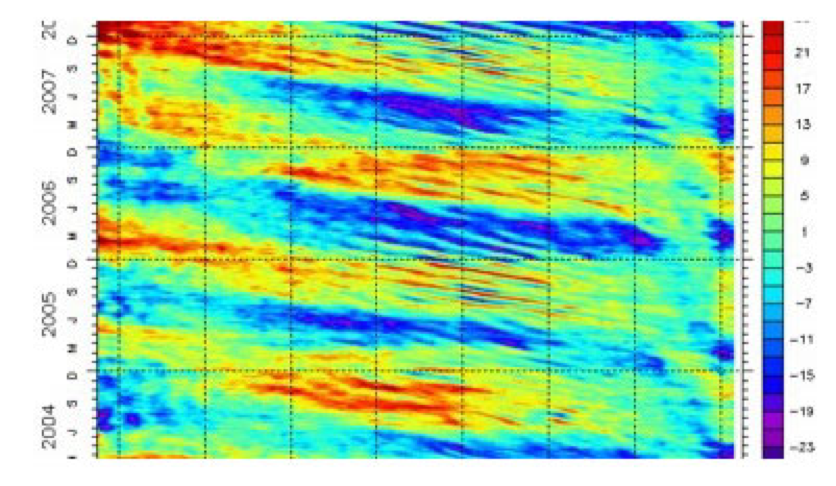El Niño is the primary mode of global variability.
El Niño/Southern Oscillation (ENSO) is important both for its effects on the local climate in the tropical Pacific and also for a wide range of global links (e.g., Atlantic hurricanes, European climate, Indian Ocean variability, African climate variability). It is, therefore, important to understand the mechanisms of ENSO, both for present climate and to attempt reliable predictions of how it might change in a warmer climate.

Figure | Characteristic ENSO SST patterns
The ENSO in the low-resolution coupled model LoLo is poor, with most variability at decadal timescales, the warming stretches too far west over the tropical Pacific, and precipitation and other anomalies are not well represented at peak El Niño. In contrast, the HiHi model has a very good simulation of ENSO - the timescale is in the 3-7 year period, although the peaks are a little longer than observations suggest. The warming extends less far west than LoLo (perhaps due to the improved mean state in HiHi), and precipitation anomalies and teleconnections appear realistic.

Figure | ENSO (SST) periodicity
The reason for the decadal power in the LoLo model seems to involve a non-robust mechanism to terminate the warm event. In observations and HiHi, an El Niño is almost always followed by neutral of cold conditions in the east Pacific in the following year, whereas for LoLo it often has continuing warm conditions. Both models seem to have a delayed-oscillator mechanism for ENSO, in which the SST anomalies in the central Pacific near peak warming cause wind stress anomalies - these, in turn, give rise to Rossby waves which travel west to the boundary and are reflected as upwelling Kelvin waves which travel east along the equator and cause the warming to terminate. This mechanism is weaker in LoLo, so that on occasion it does not flip the state in the east Pacific to cold conditions - the retention of warm conditions in the east is also aided by cloud feedbacks, which are improved in this model (compared to earlier HadGEM1), but which tend to help keep the ocean surface warm. These conditions overall lead to the poorer simulation of ENSO in LoLo.